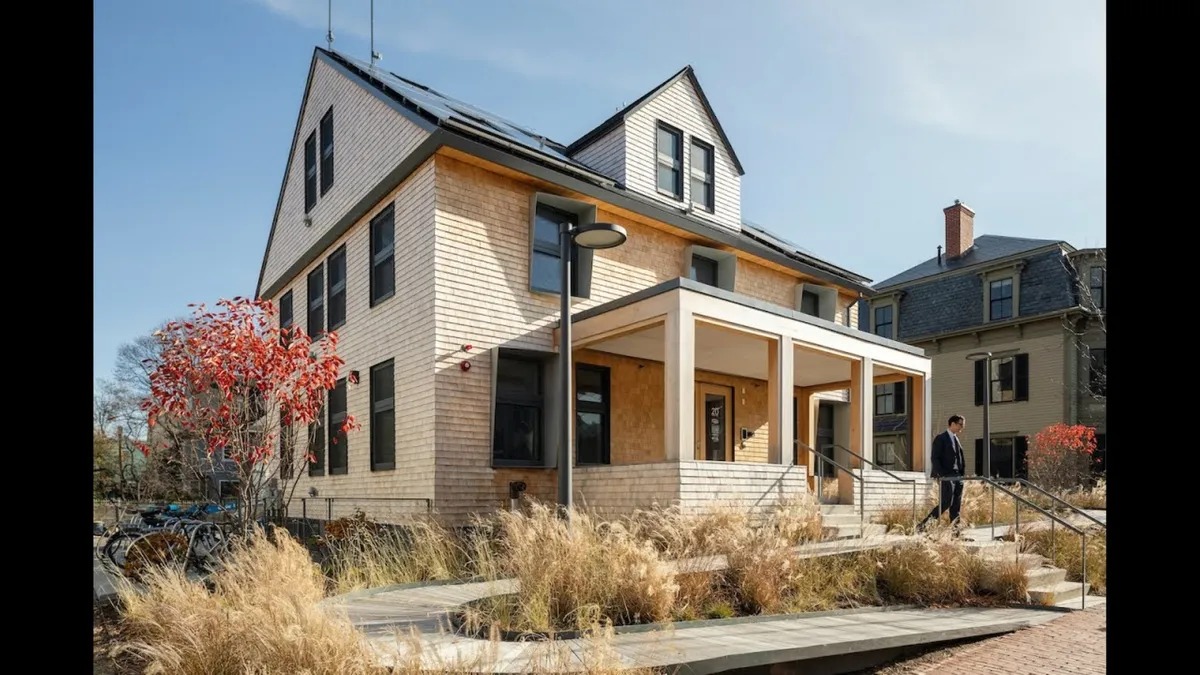Monday, 28/10/2024 | 18:34 GMT+7

While comprehensive datasets consisting of factors such as energy consumption, occupancy, HVAC operations and indoor environment have been proposed, a very limited number of datasets is reported for ultra-low energy buildings with low-energy and passive technologies, the researchers said.
HouseZero has four stories, including a ground-floor basement with a large conference room, a first floor with semi-open spaces and a second floor with an open workspace designed for 16 occupants, per the paper. The third floor has one laboratory designed to conduct room-scale experiments with a functionality that represents the building’s systems and operation, as well as the capability to experiment with different facade systems, the researchers said.
The study focuses on data from 189 sensors and meters closely related to the building’s main operational performance. Outdoor sensors include two localized weather stations and nine facade temperature sensors on the building’s facades and measure key metrics such as air temperature, relative humidity, CO2 levels and facade temperatures. Indoor sensors monitor zone-level air temperature, CO2, relative humidity and slab temperature, while a net meter validated both photovoltaic production and loads, they said.
IT loads were the most dominant energy users in both years, followed by heating and plug loads, the paper says. During summer, IT and plug loads contributed the most to total energy demand, while cooling and other loads remained stable. During winter, heating energy consumption was the highest and varied according to slab temperatures, with IT loads as the second largest contributor, the researchers said.
Indoor CO2 levels followed a diurnal cycle, rising during office hours and peaking in the afternoon, indicating a correlation with occupancy. Relative humidity remained stable with minor fluctuations, potentially linked to the building’s occupancy patterns, according to the study.
While monthly PV production and solar radiation followed the same trend throughout 2023, a new inverter with higher efficiency installed in early 2023 contributed to improved PV efficiency, the study noted.
The dataset “contributes to the development of sustainable building practices,” the researchers said. Their dataset, however, is tied to unique features of the HouseZero building such as its occupancy, design and construction materials, as well as local weather conditions and sensor-specific limitations, including their location and the accuracy of their readings, the researchers noted. They cautioned that these factors could limit the generalizability of the study’s findings to other contexts, including buildings with different designs or usage patterns.
According to utilitydive.com








 Scaling Up Energy Efficiency Models in the Textile Industry
Scaling Up Energy Efficiency Models in the Textile Industry
 Indonesia aims to reduce emissions through building industry
Indonesia aims to reduce emissions through building industry
 Energy Savings in the Seafood Processing Industry
Energy Savings in the Seafood Processing Industry
 VSUEE Project Implementation Promotional Measures: Challenges and Opportunities
VSUEE Project Implementation Promotional Measures: Challenges and Opportunities
 Promoting innovative startups in the field of energy efficiency
Promoting innovative startups in the field of energy efficiency
 Vietnam accelerates action on climate change, strengthens COP26 commitments
Vietnam accelerates action on climate change, strengthens COP26 commitments
 Energy-saving in industry in Vietnam estimated at around 20-30%
Energy-saving in industry in Vietnam estimated at around 20-30%